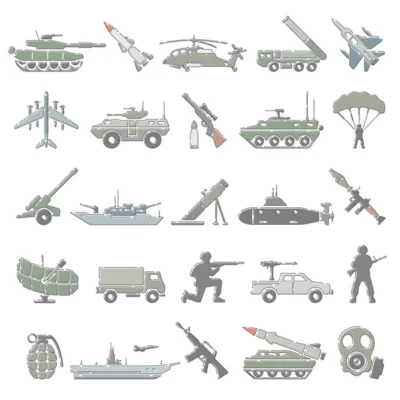As tensions between Israel and Iran intensify, retired U.S. Army Brigadier General Steve Anderson has provided a detailed breakdown of American military assets currently positioned in the Middle East, highlighting the United States’ capability to support Israeli operations, including strikes on Iran’s nuclear facilities.
Speaking from CNN’s Magic Wall, General Anderson revealed that two U.S. Navy carrier strike groups—the USS Nimitz and the USS Carl Vinson—are either on-site or en route to the Mediterranean. These carriers are accompanied by two destroyers currently within range to provide immediate support to Israel if required.
In addition to naval forces, the U.S. maintains approximately 46,000 troops stationed across nine military installations in the region. One of the most critical of these is Al Udeid Air Base in Qatar, a strategic hub for American air operations. The base houses a fleet of F-16 and F-35 fighter jets, along with aerial refueling capabilities essential for long-range missions.
Anderson also highlighted the potential use of B-2 stealth bombers stationed at Diego Garcia, a remote U.S. base in the Indian Ocean, roughly 3,500 miles from Iran. These bombers are the only aircraft capable of delivering the GBU-57 Massive Ordnance Penetrator, the Pentagon’s most powerful bunker-busting conventional bomb. The GBU-57, weighing 30,000 pounds, is capable of penetrating up to 200 feet of reinforced concrete—although some of Iran’s most secure facilities, such as the Fordow nuclear site, may be located even deeper underground.
“If the objective is to strike Fordow, the U.S. is the only country with the weapons and delivery systems capable of doing it effectively,” Anderson stated, adding that such an operation would likely require multiple bunker-busting bombs and mid-air refueling for the long-range bombers.
Meanwhile, Israel continues to assert dominance in the conflict. According to Anderson, Israeli forces currently enjoy full air superiority over Iran, including the skies above Tehran. Backed by advanced surveillance and intelligence capabilities, Israel has already degraded significant portions of Iran’s military infrastructure, including key missile launch sites.
Despite Iran’s possession of around 2,000 ballistic missiles, including the Shahab-3, Anderson emphasized that many launch facilities have been destroyed in recent Israeli airstrikes, reducing Iran’s retaliatory capacity. Iranian aerial assets, such as aging F-14 and MiG-29 fighter jets, are reportedly no match for Israel’s advanced air force and air defense systems.
“Israel has the upper hand by far,” Anderson noted. “Their air and intelligence dominance has left Iran’s military with limited options.”
Still, if Israel intends to eliminate deeply buried nuclear sites like Fordow, U.S. support remains crucial. Without the GBU-57 and the B-2 bomber, the only alternative would be a high-risk special operations ground assault—an option that would significantly escalate the conflict and risk inflaming tensions across the broader Arab world.
As the situation evolves, the Biden administration faces complex strategic choices regarding the extent of U.S. involvement. The presence of robust American military assets in the region underscores both the preparedness and the stakes involved in any future escalation.

